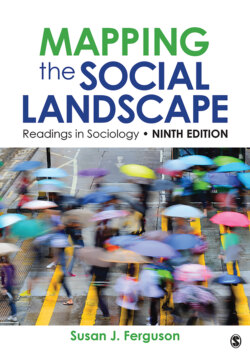Читать книгу Mapping the Social Landscape - Группа авторов - Страница 101
На сайте Литреса книга снята с продажи.
Homosexuality
ОглавлениеAlong with these icons of feminine gender performance, and arguably directly linked to them, is the other clear theme evident among some parents’ negative responses to perceived gender nonconformity on the part of their sons: fear that a son either would be or would be perceived as gay. Spontaneous connections of gender nonconformity and sexual orientation were not evident in parents’ comments about daughters, nor among gay and lesbian parents, but arose for 7 of the 27 heterosexual parents who were discussing sons. The following two examples are typical of responses that invoked the possibility of a son’s being gay, with explicit links to performance of femininity and to the parents’ own role in accomplishing heterosexuality:
If he was acting feminine, I would ask and get concerned on whether or not, you know. I would try to get involved and make sure he’s not gay. (white, low-income, heterosexual mother)
There are things that are meant for girls, but why would it be bad for him to have one of them? I don’t know, maybe I have some deep, deep, deep buried fear that he would turn out, well, that his sexual orientation may get screwed up. (white, middle-class, heterosexual father)
The first comment explicitly indicates that feminine behavior, even in a three-year-old boy, might be an indicator of an eventual nonheterosexual orientation. The second comment raises another possibility: that playing with toys “that are meant for girls” might not indicate but rather shape the son’s eventual sexual orientation. In both cases, though, the parent is reporting on actions, either actual or hypothetical, taken to discourage homosexuality and accomplish heterosexuality. Another quote from a father raises a similar concern and further exemplifies parental responsibility for the accomplishment of masculinity as linked to heterosexuality. This father had noted throughout the interview that his five-year-old son tends to show some attributes he considers feminine. At one point, he mentioned that he sometimes wondered if his son might be gay, and he explained his reaction to that possibility in the following terms: If [he] were to be gay, it would not make me happy at all. I would probably see that as a failure as a dad …, as a failure because I’m raising him to be a boy, a man (white, upper-middle-class, heterosexual father). This comment suggests that the parent does not view masculinity as something that naturally unfolds but rather as something he feels responsible for crafting, and he explicitly links heterosexual orientation to the successful accomplishment of masculinity.
The fact that the connection between gender performance and sexual orientation was not raised for daughters, and that fear of homosexuality was not spontaneously mentioned by parents of daughters whether in connection to gender performance or not, suggests how closely gender conformity and heterosexuality are linked within hegemonic constructions of masculinity. Such connections might arise more by adolescence in relation to daughters, as I noted previously regarding other aspects of parental responses to gender nonconformity. But for sons, even among parents of very young children, heteronormativity appears to play a role in shaping parental responses to gender nonconformity….
This implicit assumption appears to motivate at least some parental gender performance management among heterosexual parents, even for children as young as preschool age. Given the connections between male heterosexuality and the rejection of femininity noted previously as evident in theories of hegemonic masculinity, the tendency for parents to associate gender performance and sexual orientation for sons more than daughters may also reflect a more general devaluation of femininity.
